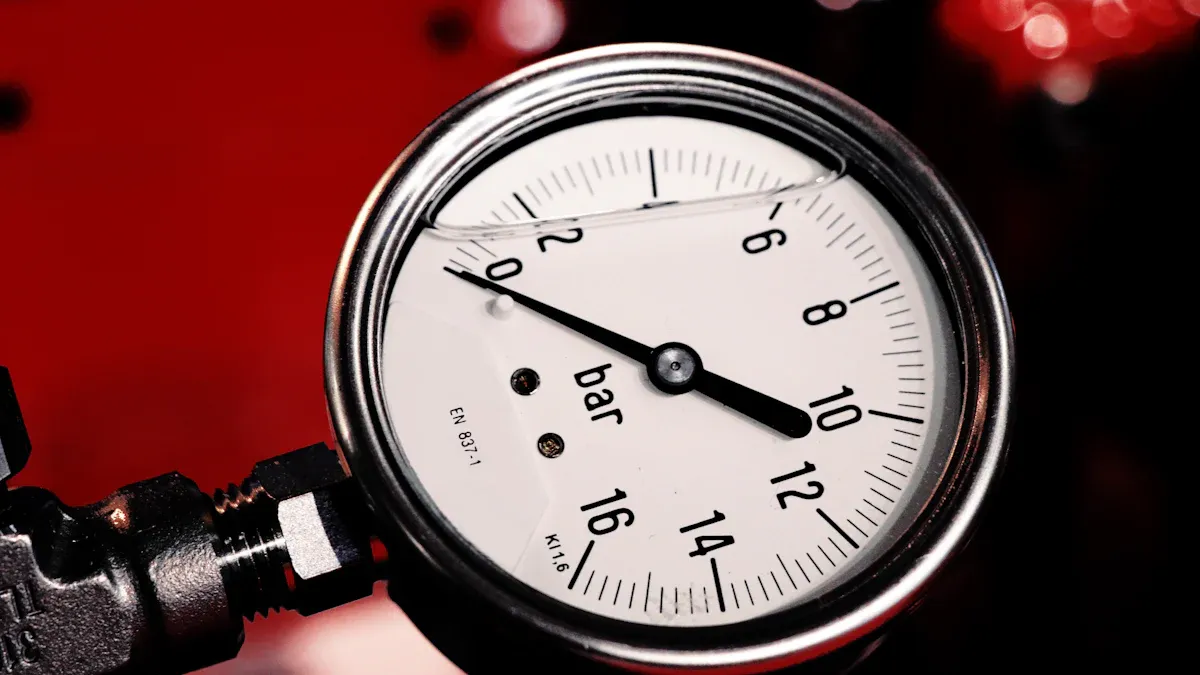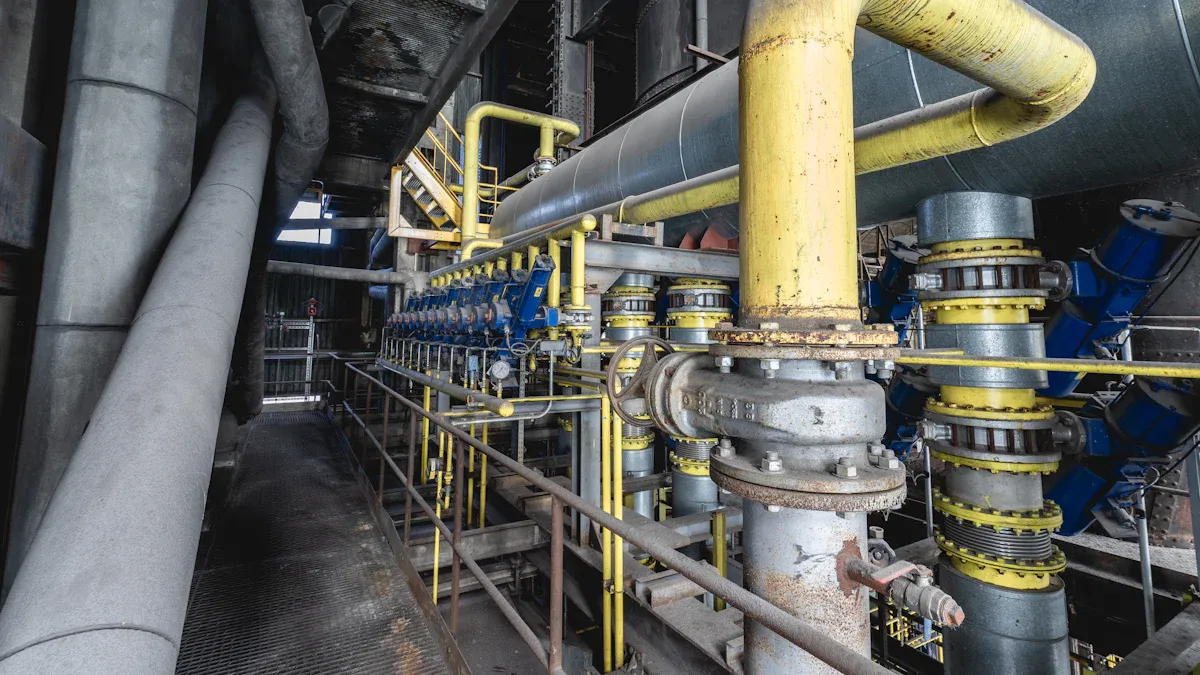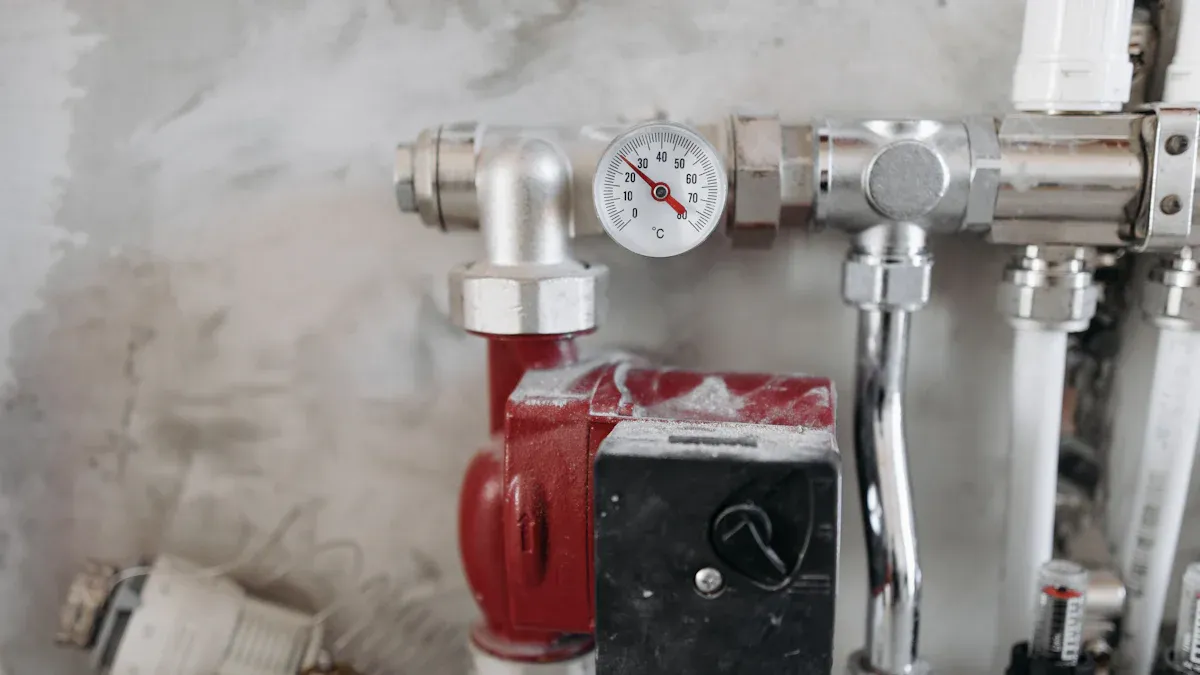How to Choose the Right Polyimide Tubing for High-Pressure Systems

Choosing the right polyimide tubing for high-pressure applications is very important. It keeps systems safe and working well. This choice affects how systems handle stress, heat, and chemicals. Key things to check are pressure limits, material type, and size. For example, high pressure needs thicker or stronger tubing. Heat over 150°F can make tubing expand and change flow. Good polyimide tubing for high-pressure applications lasts longer and works better in tough conditions. Picking the right one lowers risks and helps systems last longer.
Key Takeaways
Pick polyimide tubing with the right pressure limit for safety.
Check wall thickness and size; thicker walls last longer.
Polyimide tubing handles heat and chemicals, great for tough jobs.
Get tubing that bends easily and won’t kink for smooth flow.
You can customize tubing to fit special needs and work better.
Pressure Ratings and Safety Factors

Why Pressure Ratings Matter in High-Pressure Systems
Knowing the pressure rating of polyimide tubing is very important. It shows how much pressure the tubing can handle safely. When liquids or gases move through a system, they push on the tubing walls. If the tubing is too weak, it might burst or leak. This could cause the system to stop working. Correct pressure ratings make sure the tubing stays safe and works well.
Polyimide tubing is great for high-pressure systems because it is strong. It can handle a lot of pressure without breaking. The table below explains its key strengths:
Property | What It Means |
|---|---|
High Tensile Strength | The tubing is very strong and works well under pressure. |
Burst Resistance | It won’t break easily, even with high pressure. |
Choosing tubing with the right pressure rating keeps systems safe and prevents leaks.
How to Add Safety Margins for Tubing
When picking polyimide tubing, think about safety margins. These help protect against sudden pressure changes. For example, if your system runs at 1,000 psi, pick tubing rated much higher. A good rule is to choose tubing 1.5 to 2 times stronger than the system’s pressure. This keeps the tubing safe even if pressure rises.
The size of the tubing also matters. Thicker walls make the tubing stronger. The right diameter helps fluids flow smoothly.
Testing Polyimide Tubing for Safety
Polyimide tubing is tested to meet strict safety rules. These tests check how much pressure it can handle and how long it lasts. Companies use standards like ASTM or ISO to make sure the tubing is reliable. Tubing that passes these tests works well in tough conditions.
Tests also check if the tubing can handle heat and chemicals. This makes sure it stays strong in extreme environments.
Material Properties and Compatibility
Important Features of Polyimide Tubing
Polyimide tubing is strong and works well under pressure. It has high tensile strength, which means it can handle heavy loads. For example, tubing with carbon nanotubes can reach 107.7 MPa in strength. It can also stretch up to 130.9% before breaking. This mix of strength and flexibility makes it great for tough jobs.
Another key feature is its ability to bend without breaking. Polyimide tubing is elastic and resists bending damage. Some types, like BPDA-PS, can bend with strengths up to 94.7 MPa. They also have a modulus of elasticity of 5587 MPa. These qualities make it perfect for precise and durable systems.
Resistance to Chemicals
Polyimide tubing is resistant to many chemicals. It can handle acids, bases, and solvents without breaking down. This keeps the tubing strong even with harsh fluids. A chemical chart can help you check if it fits your needs.
For industries like food or medicine, safety is very important. AccuPath's polyimide tubing is FDA approved and NSF certified. This ensures it meets strict safety rules, making it safe for sensitive uses.
Comparing Polyimide to Other Materials
Polyimide tubing is better than many other materials. It handles heat and chemicals better than PTFE or PEEK. PTFE can break down with some chemicals, but polyimide stays strong. It also lasts longer and is more flexible than other plastics.
AccuPath’s polyimide tubing can be customized for your needs. You can choose more flexibility or thicker walls. This makes it a great choice for high-pressure systems.
Temperature and Environmental Tolerance

Heat Resistance of Polyimide Tubing
Polyimide tubing is great for handling high heat. It stays strong even in very hot conditions. For example, in electrical systems, it works up to 428ºF (220ºC). In mechanical systems, it can handle even higher heat, up to 752ºF (400ºC). This makes it a good choice for tough jobs where heat is a problem.
Here are some key heat properties of polyimide tubing:
Use Type | Max Temperature | Shrink Start Temp | Shrink Range | Shrink Force (lb/in) |
|---|---|---|---|---|
Electrical | 428ºF (220ºC) | 158ºF (70ºC) | 8%-12% | Up to 8.9 |
Mechanical | 752ºF (400ºC) | 158ºF (70ºC) | 8%-12% | Up to 8.9 |
This table shows how well polyimide tubing works in hot environments.
Working in Tough Conditions
Polyimide tubing is strong in extreme places. It handles quick temperature changes and harsh chemicals. This makes it useful for industries like aerospace and medicine. In freezing temperatures, it stays flexible and doesn’t crack. In high-pressure systems, it stays strong and doesn’t leak.
It also doesn’t expand much with heat. This keeps fluids flowing smoothly. Its toughness means fewer replacements, saving time and money.
UV and Radiation Protection
Polyimide tubing resists damage from UV rays and radiation. Regular polyimide can get cracks and weaken under UV light. But improved types, like TiNT/PI, are much stronger. For example:
Study Result | Details |
|---|---|
UV Damage | TiNT/PI tubing lasts longer under UV than regular polyimide. |
Cracks | Regular polyimide gets big cracks, but TiNT/PI has smaller ones. |
Flexibility Loss | Regular polyimide loses 51% flexibility; TiNT/PI loses only 2%. |
This shows that advanced polyimide tubing is better for outdoor or high-radiation uses. It stays strong and lasts longer.
Tubing Dimensions and Sizing
Inner and Outer Diameter Considerations
When picking polyimide tubing for high pressure, check the diameters. The inner diameter controls how much fluid moves through. The outer diameter affects how it fits in your system. If these sizes don’t match, problems can happen, like leaks or system failure.
Smaller inner diameters often handle pressure better. But, you also need enough flow for your system. The outer diameter must fit connectors tightly to stop leaks.
Tip: Always check the manufacturer’s guide to ensure the tubing fits your system.
Wall Thickness and Durability
Wall thickness is key for strong polyimide tubing. Thicker walls make it harder to burst under pressure. For high pressure, choose tubing with walls thick enough for your system’s needs.
Durability also means handling pressure changes over time. Polyimide tubing is strong and flexible, so it lasts longer. Thicker walls not only resist pressure but also extend the tubing’s life in tough conditions.
Specifying Tubing Dimensions for High-Pressure Applications
To pick the right tubing, know your system’s pressure and flow needs. Use this to decide the best inner diameter, outer diameter, and wall thickness.
For example, if your system runs at 1,500 psi, pick tubing rated higher. Make sure the walls are thick enough to avoid breaking. Also, check that the outer diameter fits connectors to stop leaks.
Note: If standard sizes don’t work, custom tubing options are available.
Extra Features for High-Pressure Uses
Easy Bending and No Kinking
Polyimide tubing bends easily, making it simple to use in tricky systems. This is helpful for jobs like medical devices that need careful tubing placement. Flexible tubing lowers the chance of breaking during setup or use. Tubing that doesn’t kink works better by stopping bends that block flow. When tubing avoids kinks, it keeps pressure steady and flow smooth, making systems more reliable.
Here’s a table showing why flexibility and no kinking are important:
Feature | What It Does |
|---|---|
Easy Bending | Makes it simple to fit into different setups. |
No Kinking | Stops bends that block fluid from flowing. |
Stronger Burst Resistance | Keeps tubing safe under high pressure. |
These features make polyimide tubing a smart pick for high-pressure systems, especially in fields like medicine and aerospace.
Smooth Inside for Better Flow
A smooth inside surface helps fluids move easily in high-pressure systems. Polyimide tubing is made to have very little roughness inside. This lowers friction and stops fluids from swirling or slowing down. It keeps flow steady and avoids clogs. In medical tools, smooth tubing is key for safely moving things like medicine or blood without problems.
Smooth tubing is also easier to clean and lasts longer. Polished insides stop buildup, so cleaning takes less time. This is very useful for systems that need to stay clean, like in hospitals.
Custom Tubing for Special Jobs
Polyimide tubing can be made to fit special needs, making it useful for many jobs. Companies can change the tubing to work better in tough places. For example, you can get tubing with extra layers for more strength or layers that make it bendier or resist chemicals.
Here’s a table of common ways tubing can be customized:
Custom Feature | What It Does |
|---|---|
Inner Sizes | Different sizes with thin walls for tight fits. |
Multi-Layer Tubing | Combines layers for bending or chemical safety. |
Stronger Tubing | Adds strength, bending, and no-kink features. |
Braided Patterns | Different designs for strength and flexibility. |
Coiled Shapes | Custom wraps to meet special needs. |
These changes let you make tubing that fits your system perfectly. For medical tools, custom tubing works well with special machines and fluids.
Picking the right polyimide tubing for high-pressure systems means checking key things. Look at pressure ratings, material strength, heat resistance, and tubing size. These help keep your system safe and working well. Getting advice from experts and reading technical guides is very helpful. The table below shows why expert tips are important:
Feature | Why It Matters |
|---|---|
Handles High Heat | Works well in hot conditions. |
Safe for Electricity | Protects systems from electrical problems. |
Resists Chemicals | Stays strong in tough environments. |
Precise Fit | Perfect for medical and aerospace systems. |
Strong and Reliable | Doesn’t break under high pressure. |
Focus on safety, good performance, and matching the right tubing to your system. This makes your system last longer and work better.
FAQ
Why is polyimide tubing good for high-pressure systems?
Polyimide tubing is strong, resists chemicals, and handles heat well. These features make it great for tough jobs. It lasts a long time in hard conditions like aerospace, medical tools, and factories.
How can you pick the right tubing size?
To find the right size, check your system's needs. Match the inside size for smooth flow and the outside size for a tight fit. Always follow the maker’s guide to ensure it works with your system.
Can polyimide tubing handle very hot or cold temperatures?
Yes, polyimide tubing works in extreme heat and cold. It can take heat up to 752°F (400°C) and stays bendable in freezing weather. This makes it perfect for systems needing heat and cold resistance.
Is polyimide tubing safe with chemicals?
Polyimide tubing stands up to many chemicals like acids and solvents. It stays strong in harsh places. Always check a chemical chart to make sure it fits your job.
Can polyimide tubing be made for special uses?
Yes, you can get custom polyimide tubing. Options include layers for strength, different thicknesses, or coiled shapes. These changes make it useful for special jobs like medical tools or tough industries.
See Also
Key Considerations for Selecting FEP Shrink Tubing
How to Choose FEP Autoclavable Heat Shrink Tubing
Selecting the Ideal Ultra-Thin PET Heat Shrink Tubing
Comparing FEP and PTFE Heat Shrink Tubing for Chemicals
Evaluating FEP Heat Shrink Tubing Brands for Temperature Tolerance

